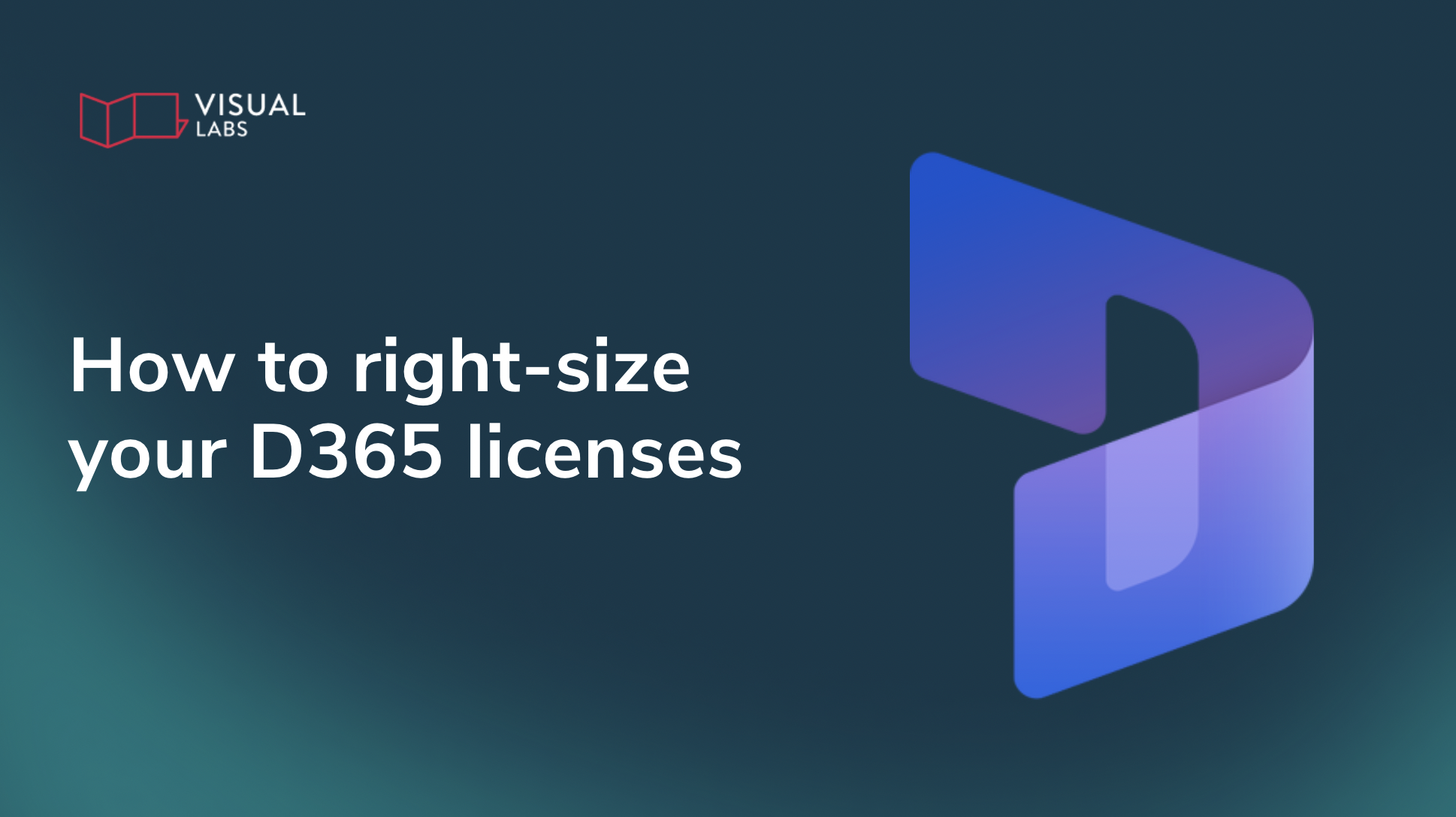Are we overpaying for Dynamics 365?

TL;DR
Most Dynamics 365 environments are over-licensed because it’s easier to give everyone full access than map what they really need. That convenience quickly turns into wasted budget, as many users could be covered by cheaper Team Member or Power Apps licences without losing functionality. By starting with personas and using the CRUD framework to align licences with actual roles, IT Ops teams can right-size their setup, reduce costs, and stay compliant. The key is to differentiate between heavy users who need full Dynamics apps and light users who only need to read or update certain data. With the right governance, you avoid duplicate licences, reclaim unused entitlements, and make licensing a strategic lever for cost savings and smoother operations instead of an afterthought.
Full access to everyone? Why that D365 licensing shortcut costs you
“It’s easier to give everyone full access than figure out what they actually need.”
If that sounds like your current Dynamics 365 licensing strategy, you’re not alone. For many Operations teams, convenience wins: Full access for everyone, with little scrutiny.
But that convenience comes at a cost.
One admin on Reddit realised that half of their 500 users likely didn’t need full Sales Enterprise licences. By reassessing needs and considering Team Member roles, they opened the door to major savings, without compromising on functionality.
This is the second part of our series. In our previous article, we discussed the basics of Dynamics 365 licensing.
In this post, we’ll show you how to avoid overspending by mapping licences to actual roles — not assumptions — using the CRUD framework and some simple steps.
Why most teams over-license by default
When you’re rolling out a CRM to a distributed workforce, many IT teams take the “just give them everything” approach:
- It’s quicker to provision
- It avoids user complaints
- It ensures access
But here’s the issue: most users don’t need everything. Let’s take field teams as an example:
- A sales rep logging notes or checking pipeline status? Probably fine with a Team Member or Power Apps licence.
- A dispatcher updating job status? Doesn’t need full Sales Enterprise.
Over time, these mismatches become expensive.
Start with personas, not products
Before assigning a single licence, step back and map your users by persona. Ask two questions:
- What business role do they play? (e.g. Sales rep, dispatcher, technician)
- What do they actually need to do in the system? (Use the CRUD framework: Create, Read, Update, Delete)
Then build a simple persona-functionality matrix. Here’s what that might look like:
.png)
Instead of starting with licence types, begin with actual user roles. This is an example of what it might look like:
Now you’re licensing based on what users do, not what they “might need someday”.
Use cases where Team Member or Power Platform wins
Let’s say you have:
- 10 partner managers or field reps managing opportunities full-time
- 100 extended team members like product, customer service, or sales support staff who just check status and log meetings
You don’t need 110 Sales Enterprise licences.
Instead, those 100 lighter users could use:
- Team Member licences for basic read/update interactions
- Power Apps per-user or per-app licences for custom tools
That change alone could lead to significant savings, while still enabling mobile access and compliance.
Don’t forget: Team Member licences have limits
Team Member licences are cost-effective, but they come with restrictions:
- Users can read any data but can only write to limited entities (e.g. contacts, notes, tasks)
- They’re limited to one Dynamics 365 app module and one custom app
- They don’t support premium plug-ins or complex automation
Tip: Create simple, dedicated apps for Team Member roles. For example, a “Sales Assistant” app that restricts functionality to what’s permitted.
Power Platform: The underrated licensing play
If your field users mostly use custom mobile apps — say, to:
- Record visit results
- Complete inspections
- Trigger automated workflows
…then they may not need a Dynamics 365 licence at all.
Instead, use Power Apps licences to:
- Access the same Dataverse instance (as long as those apps don’t rely on restricted entities like some Sales or Service records)
- Work with custom tables
- Run Power Automate flows
- Keep licensing flexible and compliant
For many field teams, this is the simplest way to reduce licensing costs while improving the user experience.
What to do next: Your 2025 licence optimisation checklist
- Audit your current licence usage
Start with heavy vs. light users. Who really needs full access?
- Map access by role
Build a persona-to-functionality matrix using the CRUD model (Create, Read, Update, Delete).
- Reassign based on real needs
Don’t rely on legacy assignments. Right-size licences to fit current roles.
- Use Team Member licences wisely
Apply only where read-only, self-service, or basic update access is sufficient.
- Deploy Power Platform licences
Great for users who only need custom apps or limited interactions.
Avoid common traps
- Don’t use Power Apps licences to access D365 restricted entities
Be careful: Sales, Field Service, Customer Service features and restricted entities are off-limits.
- Avoid duplicate licences across environments
Check for sandbox or legacy orgs assigning unnecessary extra licences.
- Reclaim unused entitlements
Track who actually logs in and remove licences from inactive or former users.
- Watch for multiplexing violations
Sharing a single account across multiple users via Teams, SharePoint, or embedded apps? This is not allowed, and Microsoft is tracking it.
Licensing impacts more than your budget
Licensing isn’t just a budgeting decision — it’s an operational one. The wrong licence can block users, slow down processes, or waste tens of thousands annually.
Matching licences to how people actually work can reduce spend, streamline provisioning, and improve satisfaction for your mobile workforce.
Need help auditing your Dynamics 365 environment? Contact us to discuss your use case.
Up next in our D365 Licensing series:
- D365 or Power Platform: Which one is right for your use case?
- How to keep control over license sprawl in distributed teams
Disclaimer: This post is for informational purposes only and does not constitute formal licensing advice. Microsoft licensing is complex and subject to change — always refer to the official Microsoft Licensing Guides and consult with a qualified advisor (like us!) before making decisions.
Blog posts

Copilot Studio without the risk: The IT ops’ guide to AI governance
Heading 1
Heading 2
Heading 3
Heading 4
Heading 5
Heading 6
Lorem ipsum dolor sit amet, consectetur adipiscing elit, sed do eiusmod tempor incididunt ut labore et dolore magna aliqua. Ut enim ad minim veniam, quis nostrud exercitation ullamco laboris nisi ut aliquip ex ea commodo consequat. Duis aute irure dolor in reprehenderit in voluptate velit esse cillum dolore eu fugiat nulla pariatur.
Block quote
Ordered list
- Item 1
- Item 2
- Item 3
Unordered list
- Item A
- Item B
- Item C
Bold text
Emphasis
Superscript
Subscript

Speed up ERP data migration to D365 without compromising quality
Heading 1
Heading 2
Heading 3
Heading 4
Heading 5
Heading 6
Lorem ipsum dolor sit amet, consectetur adipiscing elit, sed do eiusmod tempor incididunt ut labore et dolore magna aliqua. Ut enim ad minim veniam, quis nostrud exercitation ullamco laboris nisi ut aliquip ex ea commodo consequat. Duis aute irure dolor in reprehenderit in voluptate velit esse cillum dolore eu fugiat nulla pariatur.
Block quote
Ordered list
- Item 1
- Item 2
- Item 3
Unordered list
- Item A
- Item B
- Item C
Bold text
Emphasis
Superscript
Subscript
Ready to talk about your use cases?
Request your free audit by filling out this form. Our team will get back to you to discuss how we can support you.


